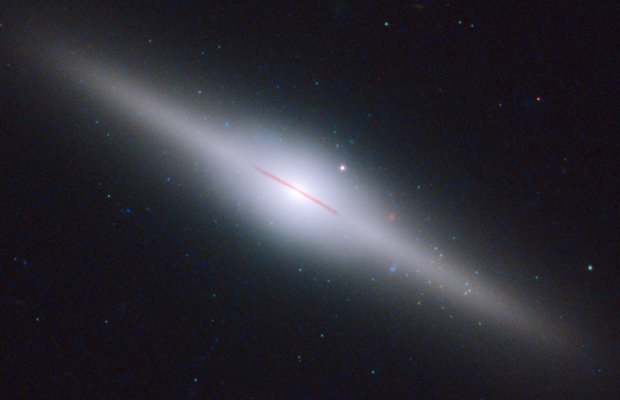New type of black hole yields secrets

A BLACK HOLE in a distant galaxy about 290 million light-years away is providing clues to how our own galaxy, the Milky Way, was formed, say Australian astronomers.
A black hole is a region of space where matter is so densely squeezed together that its gravitational pull sucks in everything, including light.
Astronomers classify black holes into two groups. So-called stellar-mass black holes are up to about 100 times the mass of our Sun, while supermassive black holes are millions to billions times the mass of our Sun.
Scientists know that stellar-mass black holes are the result of the death throes of a large star, at least 20 times bigger than our Sun. But just how supermassive black holes – which lie at the heart of all large galaxies, including ours – are born is more of a mystery.
New type of black hole
In 2009, Dr Sean Farrell an astronomer at the University of Sydney and colleagues reported the first good evidence for the existence of a third type of black hole – a ‘medium-sized’ or ‘intermediate mass’ black hole – which they called HLX-1. This object is around 500 times the mass of our Sun.
Now, as they report this week in the Astrophysical Journal, Sean has led a team that has used the Hubble Space Telescope to study HLX-1 much more closely.
In the Hubble images, HLX-1 shows up as a bright blue dot. This, along with an analysis of the rest of the light in the region, suggests that it is surrounded by a cluster of young, massive stars, says Sean. The most likely interpretation, he says, is that HLX-1 started out as a medium-sized black hole in the centre of a relatively small, low mass ‘dwarf’ galaxy which was then swallowed up by a much bigger galaxy – leaving the black hole behind.
Evolution of galaxies
“Understanding how intermediate-mass black holes form tells us something about how many of them there might be out there – which is crucial for determining what role they may play in the formation and evolution of galaxies,” Sean says.
One theory for the origins of much bigger supermassive black holes is that they’re the result of the merger of relatively small or ‘dwarf’ galaxies containing medium-sized black holes – but no one knew how many medium-sized black holes might be out there, and so how plausible this might be.
Dwarf galaxies are the most common type in the universe. If at least some contain medium-sized black holes, there could be hundreds of this type for every supermassive black hole, meaning the theory is indeed plausible.
Dwarf galaxy most common type
This is “interesting and exciting work,” says Dr Fabien Grise at the University of Iowa, in the USA.
“Supermassive black holes seem to be present in the centre of every galaxy and therefore, they represent an essential component of galaxies. The formation of these black holes is likely to be intimately linked to the formation of the galaxies that host them,” he says. “Therefore, understanding how and where intermediate-mass black holes were formed may in fact reveal clues on the formation of galaxies, including ours.”
Professor Sergei Nayakshin, an expert on black holes at the University of Leicester, UK, also welcomes the new findings.
The new images strengthen the team’s claim that this really is an intermediate black hole, he says, which is very important in itself. It’s not clear yet just how significant the work will be for understanding how supermassive black holes are formed, as the results are so new and will need time to be digested, he says, “but I would bet that one day these observations may play a vital role.”
RELATED STORIES

